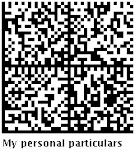The fear of number 13 is called triskaidekaphobia.(lol) There were thirteen people at Christ's Last Supper before his captivity, it is recorder that Christ was crucified on Friday. Routine mission to the moon goes drastically wrong on Apollo 13. Some hotels skip number thirteen when numbering rooms. In Formula 1, there is no car with the number 13.Okay...Anyway, does your house address start with a 1? According to a strange mathematical law, about 1/3 of house numbers have 1 as their first digit. The same holds true for many other areas that have almost nothing in common: the Dow Jones index history, size of files stored on a PC, the length of the world’s rivers, the numbers in newspapers’ front page headlines, and many more. The law is called James' law--just kidding--actually it is Benford’s law, after its (second) founder, Frank Benford, who discovered it in 1935 as a physicist at General Electric. The law tells how often each number (from 1 to 9) appears as the first significant digit in a very diverse range of data sets. Besides the number 1 consistently appearing about 1/3 of the time, number 2 appears with a frequency of 17.6%, number 3 at 12.5%, on down to number 9 at 4.6%. In mathematical terms, this logarithmic law is written as F(d) = log[1 + (1/d)], where F is the frequency and d is the digit in question. Benford took this observation a step further than Newcomb, and began investigating other groups of numbers, finding that the “first digit law” emerged in groups as disparate as populations, death rates, physical and chemical constants, baseball statistics, the half-lives of radioactive isotopes, answers in a physics book, prime numbers, and Fibonacci numbers. In other words, just about any group of data obtained by using measurements satisfies the law.
Saturday, October 18, 2008
Subscribe to:
Post Comments (Atom)

No comments:
Post a Comment